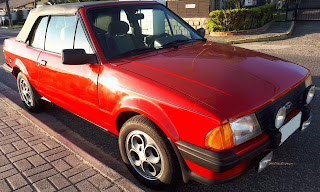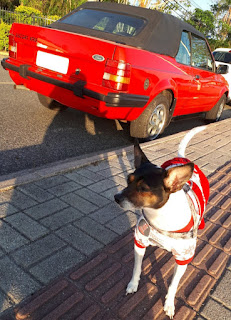It's not unusual to claim the CHT engine is the one to blame for the Escort XR-3 not having been taken so seriously as a sports car in Brazil until the AutoLatina joint-venture with Volkswagen provided Ford with the AP engine, yet the unsuitability to expand the CHT over 1.6L was much more of a real issue. Ford really got a hard hit from the '73 oil crisis in Brazil due to bad planning, including the usage of the F-Head Willys Hurricane engine in Brazilian versions of the Maverick instead of the Thriftpower Six which was available in Argentina powering the Falcon and the F-100 which used to rely only on the V8 engines in Brazil until the Lima OHC became available in Brazil only in the 2.3L displacement and also resorting to natural aspiration and carburettor while export-bound variants could be had with EFI and even turbocharging. In trouble, the Brazilian branch was saved by a combination of engine exports to the United States, the creation of the F-1000 which was basically a higher-GVWR F-100 with a Diesel engine available (while the Argentinian-sourced Thriftpower Six was not so sought after), and naturally the Escort to which the CHT engine already on the parts bin was a reasonable option not requiring the expenses of a tooling update to manufacture the CVH engine fitted to its European and American counterparts.
A cheap engine to manufacture, and nearly indestructible while also quite easy to overhaul due to its wet-sleeve layout, the Renault Cléon-Fonte on which the CHT is based was successfully tuned to high power and torque ratings in Europe, being widely used for rallying and other demanding motorsports even behind the Iron Curtain where some derivatives were made by Dacia in Romania before it merged with Renault. Even though it's often pointed out as "inferior" and "outdated", mostly due to the lack of an aftermarket support so focused on performance enhancements, the CHT engine was better than what it's often regarded in Brazil, with its low-end torque still being appreciated despite featuring a lower specific power within the 1.6L displacement range compared to what Volkswagen and Chevrolet had to offer in Brazil during the '80s. Had it not fell so out of favor between '86 and '96 when AutoLatina was in effect, sure the CHT could've proven its worth, and eventually could fare better than the Kent-based Endura-E supplied from Spain from '96 to 2000 in 1.0L and 1.3L variants along the 1.4L Zetec-SE once the Fiesta started being made in Brazil, and then presumably with the fitment of a sequential EFI and other fewer improvements it would not surprise me the CHT could save Ford in Brazil again...


No comments:
Post a Comment
Only comments written in English are published. Not so rigid about the grammar, but some regional slang should be avoided to make it clear and easily understandable.